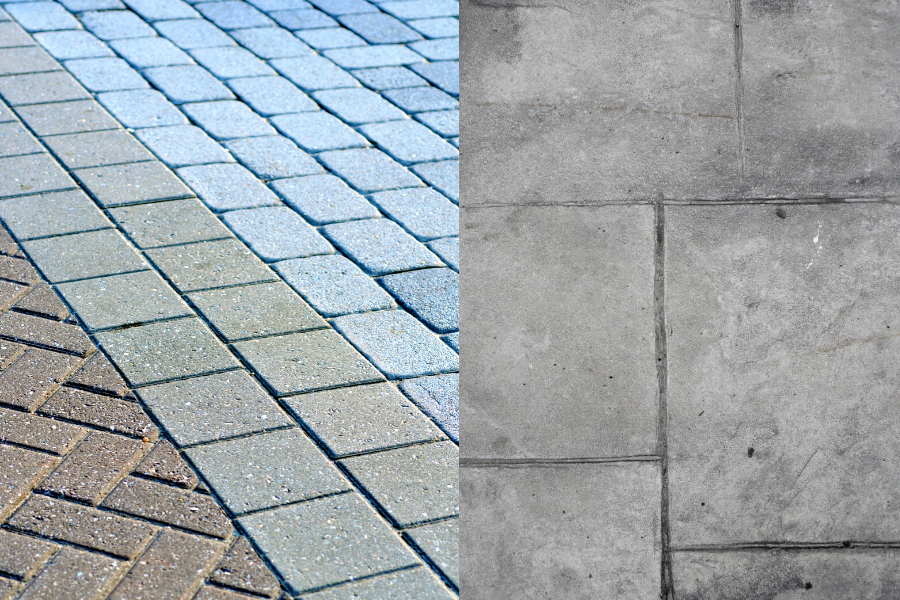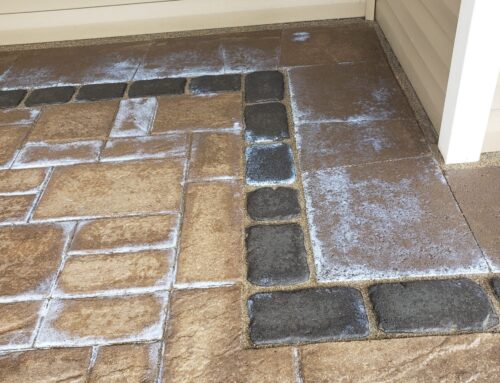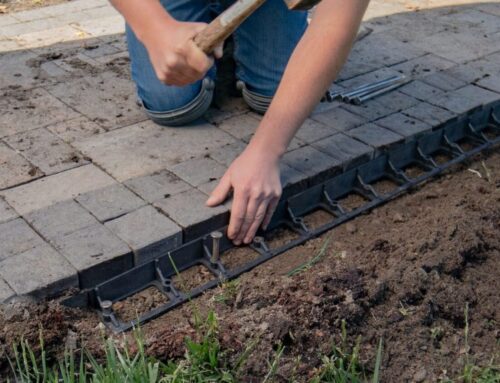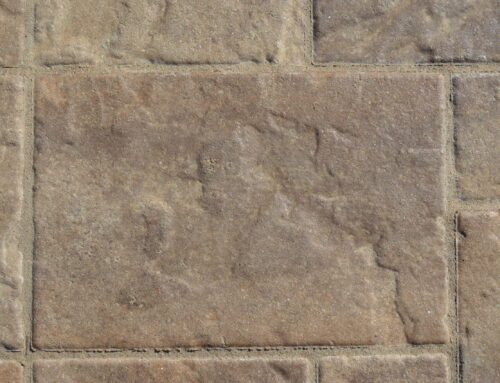When thinking about having patio or walkway installed, the most common options are stamped or patterned concrete or concrete pavers. Our sister company, Chestnut Hill Nursery, has been installing patios and walks for over 45 years and often has clients who are confused as to which option would be better suited for their project. If you’re considering putting in a patio or walkway, but having trouble choosing between concrete pavers or stamped concrete, look no further. This blog will compare the two options and help you determine which is the best option.
Strength
First of all, when it comes to strength, concrete pavers are a whopping 8,000 PSI or greater, as opposed to stamped concrete which is typically 3,000-4,000 PSI. PSI (pounds per square inch) is a measurement that determines how a paver will hold up under heavy traffic over time. Having a higher PSI also means that it is more resistant to the effects of freeze-thaw cycles. Stamped concrete is simply a decorative slab that is more likely to crack due to its low PSI. On the other hand, concrete pavers typically don’t crack, but should a paver ever break, replacing a single paver is much easier than having to replace an entire section of stamped concrete. Because of their relatively smaller size and numerous interlocking patterns, pavers have a built-in flexibility that can’t be matched with large poured slabs.
Other things to consider are the effects of nature. Weather conditions such as rain, snow, cold, humidity and heat radically impact stamped concrete on a daily basis. Concrete pavers were built to withstand these weather conditions.
Color
When it comes to color durability, concrete pavers have their color integrated throughout the entire paver whereas stamped concrete, in most cases, only has a top color and pattern layer applied to the top of the slab. Therefore, the color on concrete pavers is more resistant to wear and fading as opposed to stamped concrete which is more likely to chip away exposing the natural concrete color below.
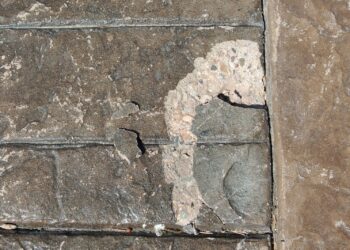
Design
Stamped concrete comes only in a handful of different brick or stone textures. This is why designing with stamped concrete can be difficult or costly. However, concrete pavers come in a wide variety of shapes, colors and sizes making it easy to choose the best pattern and design for your project.
Maintenance
Although a protective sealant should be applied regularly to both stamped concrete AND pavers, stamped concrete requires more frequent application of sealer than pavers in order to protect the finish applied to the surface of the slab. This increases the maintenance cost and application of the wrong sealant could damage the color of your patio as well as make it slippery and unsafe to walk on when wet. Pavers will maintain their color as well as their slip-resistance even when sealed.
Cost
The cost of a stamped concrete installation is actually very comparable to a paver installation in most cases. However, even if you do save a few dollars on the front end (and not in every case), you’ll end up paying more in the long run due to maintenance and repairs.
Considering all the negatives, is there any reason to risk choosing stamped concrete over pavers? With less strength, fewer options for creativity and more maintenance, it’s just not worth the money to install stamped concrete.
Read our story on how we started Cleaning and Sealing Our Way To Success!

